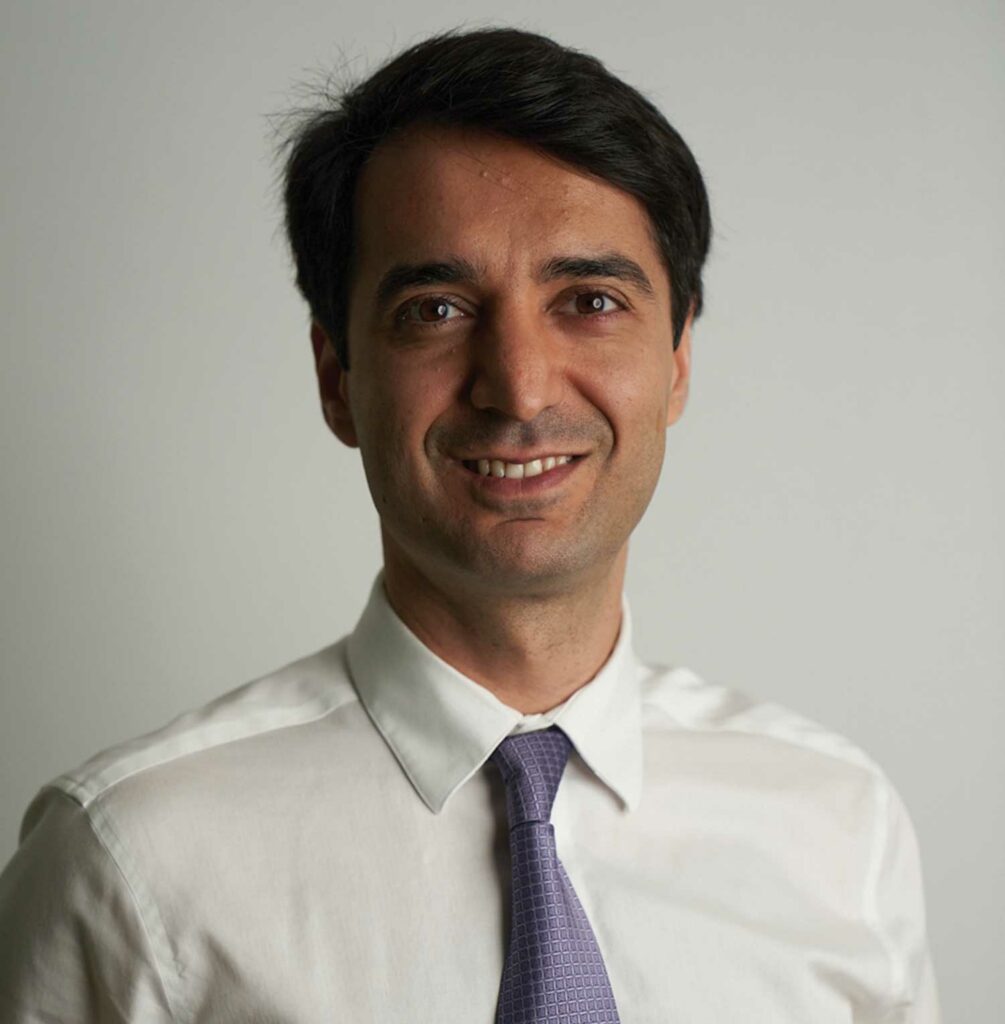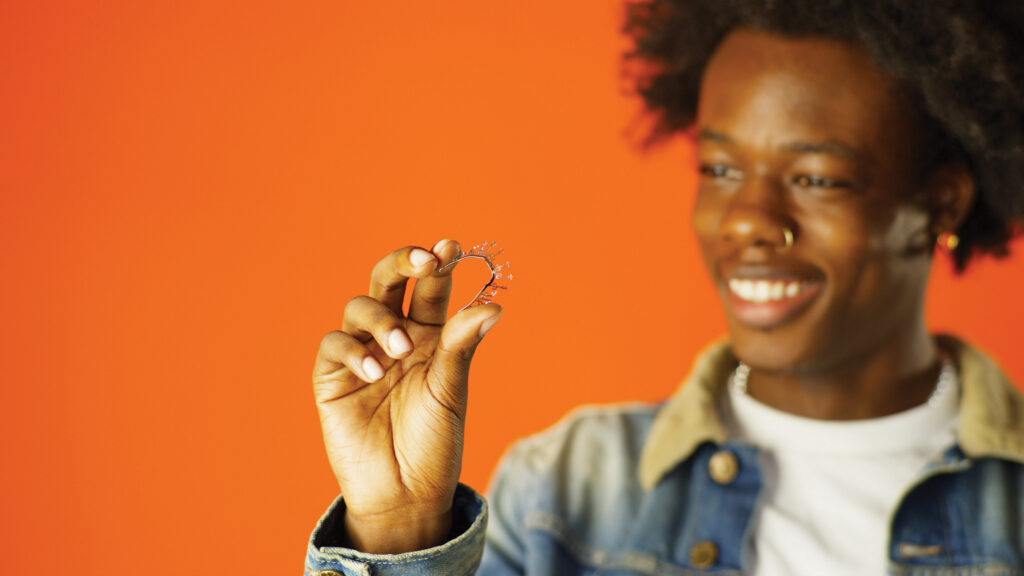Orthodontic Products talks to Dr Mehdi Peikar, chief medical officer and co-founder of Brius Technologies about Brava, a lingual NiTi appliance that combines the biomechanics of braces and the aesthetics of aligners.
Looking for a new lingual orthodontic treatment option for your patients that’s not braces or aligners? Brius Technologies has entered the market with Brava, a patented biomechanical back-of-the-teeth system that uses artificial intelligence (AI) and, what the company calls, “Independent Mover” technology to provide independent and simultaneous movement of the teeth to achieve the patient’s ideal smile.
To make this happen, the company works with the Brava certified orthodontist to create the patient’s customized per-tooth treatment plan which is then pre-programmed into Brava’s NiTi arms. Manufactured in the United States, the appliance is made from lightweight shape memory alloy, a material invented for the space program. According to the company, Brava puts each tooth on an independent path to its final planned position.
Brava, which is aimed at adolescent patients, can be used with patients for whom compliance could be an issue. As the company puts it, patients don’t need to remember to put it on and can’t lose it. In addition, the appliance allows for easier flossing, and adjustments aren’t needed.
To learn more about the company and Brava, Orthodontic Products spoke to orthodontist and physicist Mehdi Peikar, DDS, MSc, PhD, chief medical officer and co-founder of Brius Technologies.

Orthodontic Products: You have a unique background. You are not only a practicing orthodontist, but you also received a Master’s degree in quantum mechanics and condensed matter from the University of Illinois and a PhD in biomechanics from Johns Hopkins University. How did this career path come together?
Mehdi Peikar, DDS, MSc, PhD: I have always been passionate about physics. I find the world of quantum physics fascinating and after finishing my orthodontics training, I came to the US to study physics and follow my passion. I learned a lot during my PhD and being a physicist really helped me in developing Brius too. It’s amazing how much math and physics goes into designing such a tiny device and because each Brava is designed for a specific patient and each arm for a specific tooth, all the math is done each time an orthodontist submits a case.
OP: In starting Brius Technologies, you set out to bring an alternative to braces and aligners to the orthodontic field. Why did you think orthodontics needs a braces and aligner alternative?
Peikar: I believe each of these solutions solves a specific problem, but you must compromise on something. With aligners, you get aesthetics (almost!), but must compromise on biomechanics and can only treat compliant patients with mild malocclusions. With braces you can treat all cases, but they are not aesthetically pleasing. I wanted to make a no-compromise solution where you can have the biomechanics of braces and aesthetics of aligners, with much shorter treatment as the cherry on the cake. Brava can treat all cases and is a complete solution for every practice.
OP: Brius just launched the Brava teeth straightening solution. What is Brava?
Peikar: Brava is a new way to move teeth. It’s a custom-made device that consists of a rigid bar that sits on the gingiva and flexible arms that connect it to each tooth. These arms act as springs and move the teeth from the original position to the final position approved by the orthodontist. All the movements are programmed in the arms and mild-to-moderate cases can be treated with just one Brava—and we have had patients who have been treated with just three visits. This really expands the area a practice can target, and I have treated patients that were 1,500 miles away.
OP: Key to what Brius is doing is this Independent Mover technology. What is Independent Mover technology and what does it bring to orthodontic treatment to be able to move the teeth independently yet simultaneously?
Peikar: The flexible arms are connected to and get anchorage from a rigid bar and not to the nearby teeth. This is the main difference as that almost eliminates the undesired forces to the nearby teeth and results in independent movement. This has resulted in significant reduction in treatment time and thousands of happy patients have been treated with this product.
OP: When an orthodontist holds the Brava appliance in their hands for the first time, what will they see?
Peikar: They will see a perfectly polished and shiny NiTi device with a rigid bar and flexible arms attached to it. They can see the arms are flexible and can be pulled and pushed just like a spring. They can also see the bracket engagement hooks on the end of each arm. My experience is that usually for the first time they say, “The Brava is so light and I did not expect it!”
OP: This is a custom appliance. What is the process from treatment planning to fabrication?
Peikar: The basic treatment planning with Brava is very similar to other aligner solutions. The orthodontist uploads the intraoral scan to the Brius software, called Brius Planner, and receives a virtual treatment plan within 1 to 2 days. The main differences are that because Brava can move the crown and also roots very effectively, we do recommend submitting CBCT scans for better and more comprehensive treatment. The doctor can see the jaw and even airways to help them decide on the ideal treatment plan.
OP: What is the average shipping time for the appliance?
Peikar: 95% of devices are shipped within 5 business days of approval of the treatment plan. All devices are shipped within 7 business days.
OP: How is the Brava appliance bonded?
Peikar: We use a digital bonding tray (DBT) to bond the bracket and after that the arms of the Brava are engaged one by one to the brackets.

OP: How often is the patient typically coming into the practice for appointments between bonding and debonding/finishing?
Peikar: Other than rebonds, if necessary, the patients don’t need to come to the clinic more frequently than every 6 months. The treatment for mild-to-moderate patients will be finished by then but for more complicated cases, they would have to receive a second Brava to continue their treatment. However, we see that some orthodontists prefer to see the patient every month to keep the relationship with their patients but there won’t be any work to do at that time and they will mostly talk to the patient and check their oral hygiene.
OP: What types of cases can the Brava system be used to treat? And can this be used with both adolescents and adults?
Peikar: Brava can treat all cases—from the simplest to the most complex and also from mixed dentition to adults—but we do have some limitations for the first 10 cases submitted by each doctor.
- Moderate crowding (4 to 7mm)
- Deep bite
- Expansion
- Moderate generalized spacing (4 to 7mm)
- Sagittal correction
- Midline correction
We have also found that teenagers adjust to the Brava appliance much easier than adults and always recommend starting with this age group.
OP: Does the orthodontist need to or can they use any attachments if necessary?
Peikar: They can use attachments as they would in their traditional braces treatments for elastics.
OP: What should orthodontists know about patient compliance and the overall patient experience with the Brava appliance?
Peikar: Because this is a fixed appliance with very few visits required, compliance is not going to be a concern for our doctors. We have had many patients who did not show up to their appointments due to personal reasons or COVID concerns for 5 months or more and Brava was still working, and their treatment was done by the time they came back to the clinic. We do ask our doctors to set the expectation for their patients as there will be some adjustment in the first 2 weeks as far as speech and getting used to Brava.
OP: If an orthodontic practice is using remote monitoring with their aligner and braces patients, can they also use it with their Brava patients?
Peikar: Absolutely. Brava is on autopilot and does not need any adjustments. A combination of Brava and remote monitoring works perfectly to decrease the number of visits. That will save a lot of time for the orthodontist, patients, patient parents and even the staff in the clinic.
OP: What kind of training or customer support does Brius offer orthodontists adopting the Brava appliance into their practices?
Peikar: We send a clinical trainer to the doctors’ office for the first five bondings. We do offer training material, webinars, and study clubs for our doctors to interact with me and the team and ask any questions they may have.
OP: What’s next for the company?
Peikar: This year, we will be expanding our provider network and improve our product to provide better and more efficient treatment to all. There is a lot to come, stay tuned. OP










